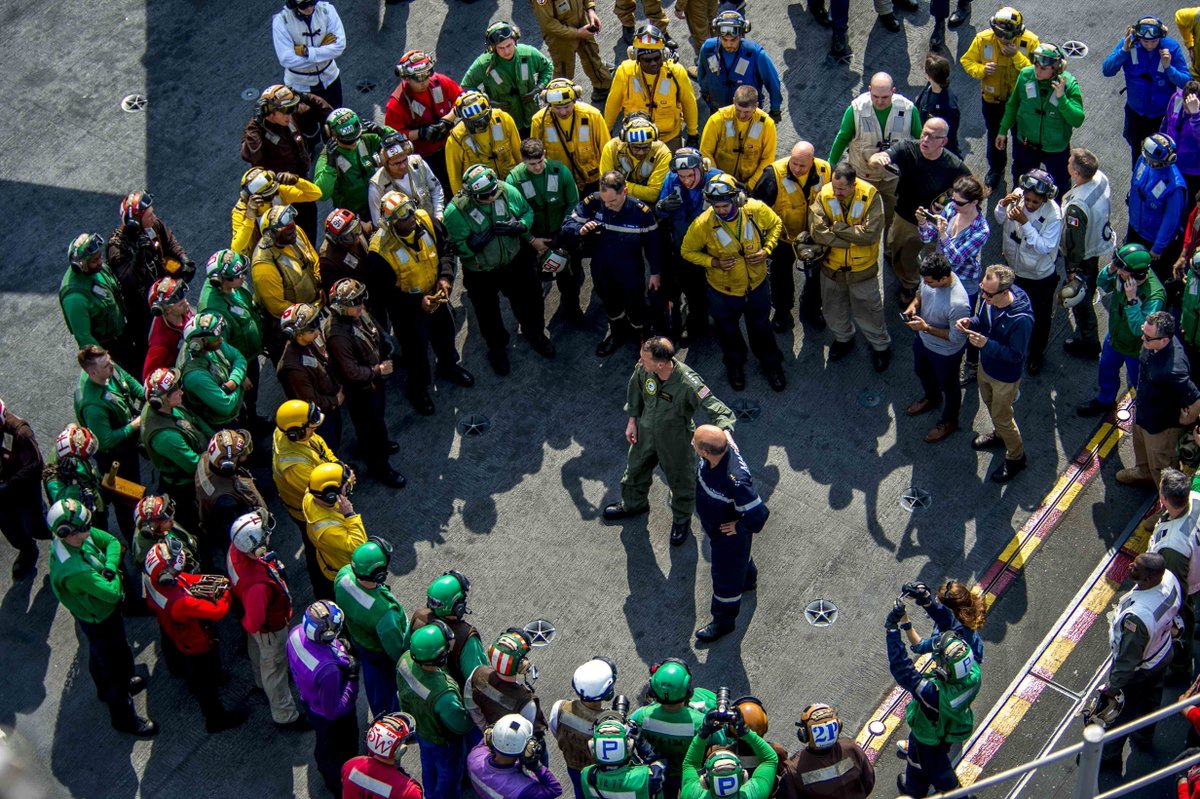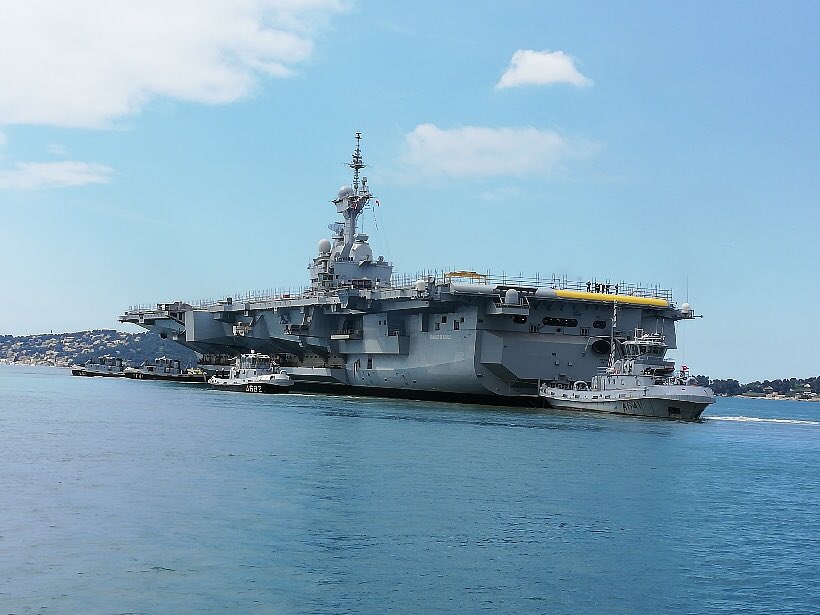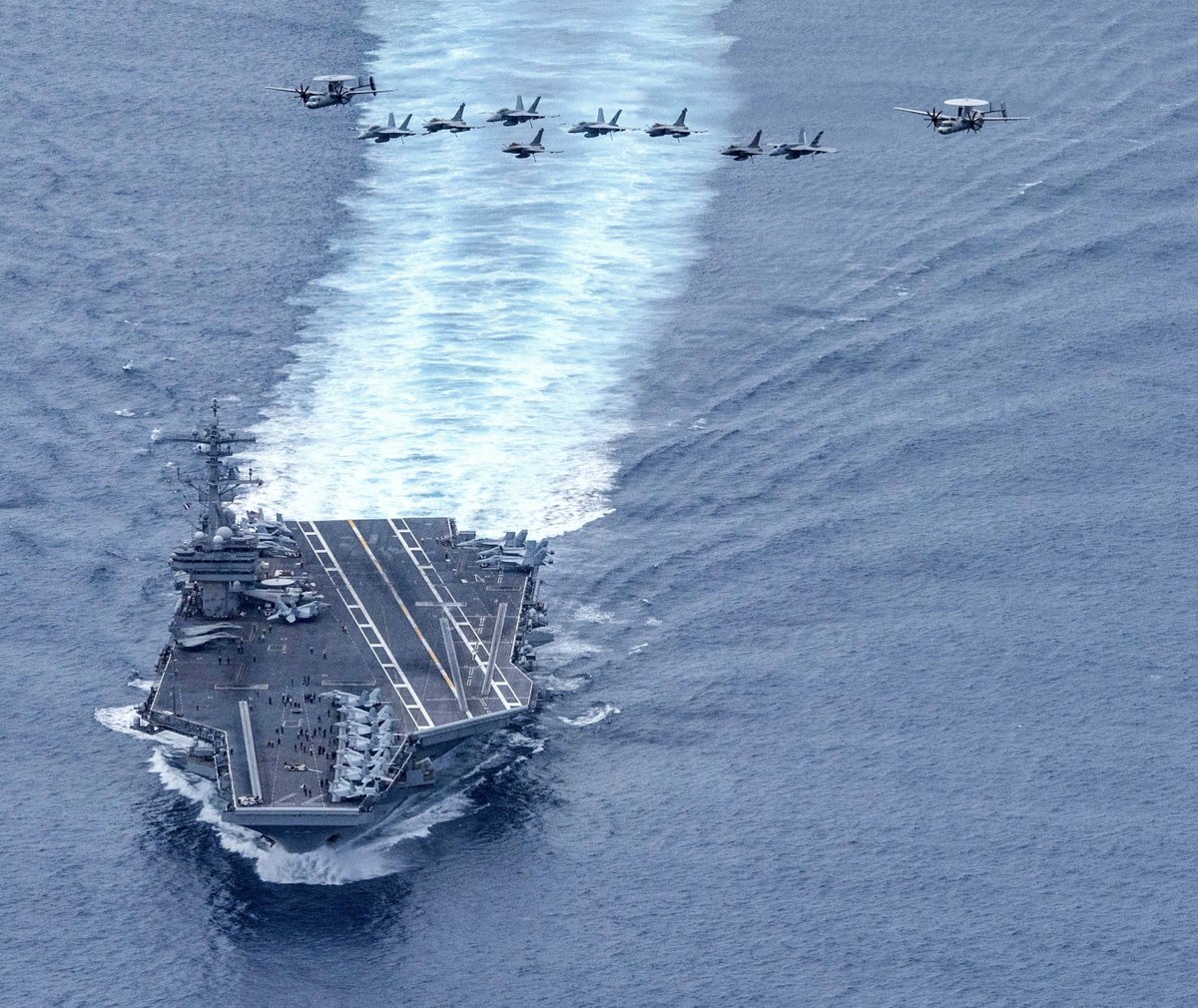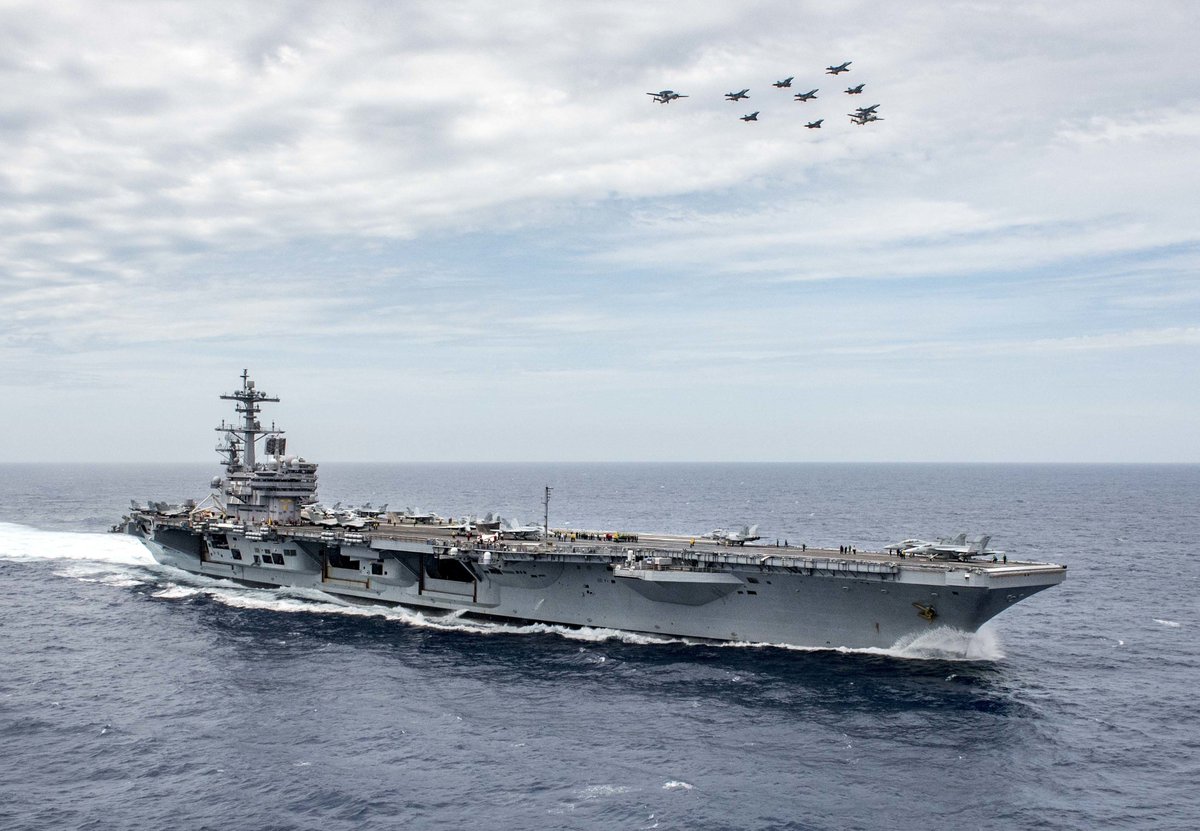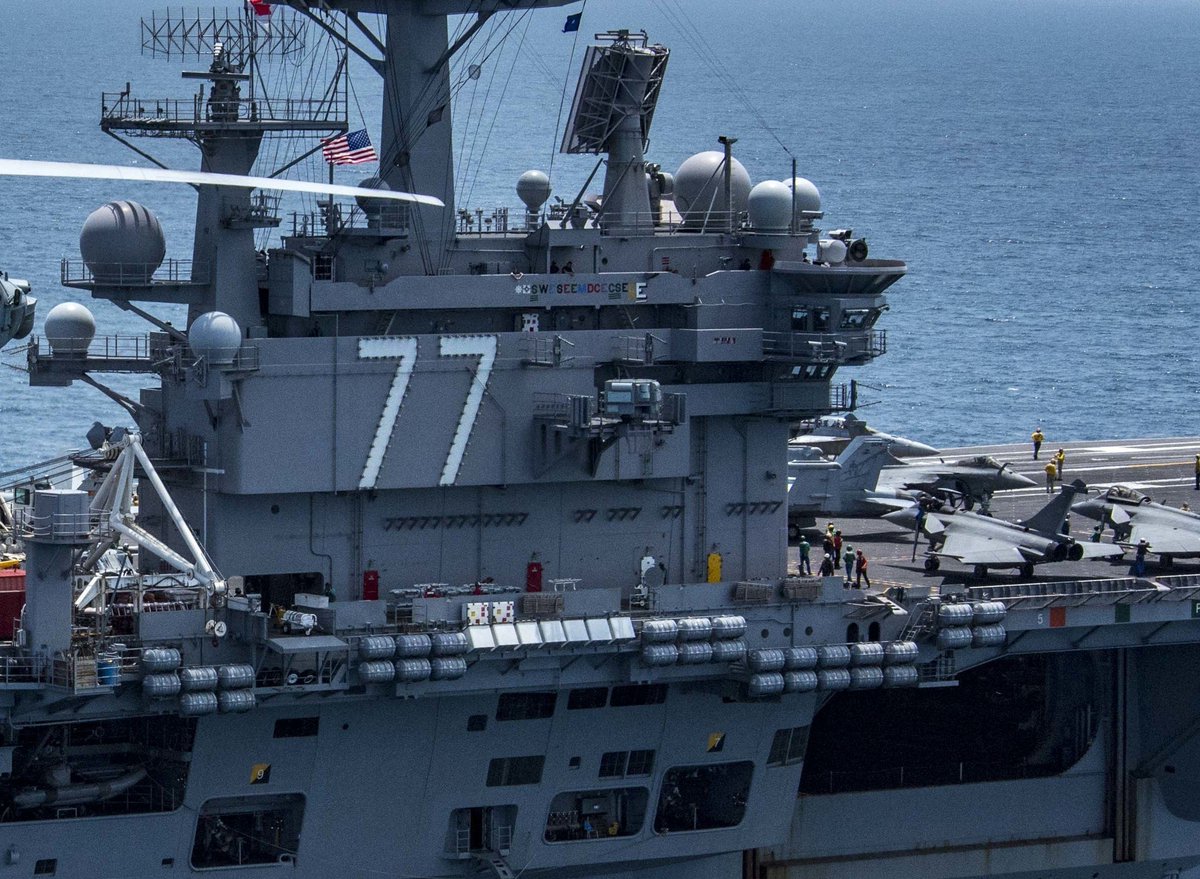Jura The idiot
General
... going on with the google translation of
:
Aquitaine: Eastern Mediterranean, Chammal mission;
Provence: return of Exercise TG 18.1 conducted off the coast of Norway;
Languedoc: integrated into the Dynamic Manta exercise 2018 near the Sicilian canal;
Auvergne: presumed in Toulon since December 2017 following his return from mission in Asia;
Brittany: presumed in Brest, she started her trials at the end of 2017;
Normandy: launched on February 1, 2018 in Lorient.
A FREMM is already on the zone while two other frigates could be under 48 to 96 hours, even a third if the order was given to Provence to join the Mediterranean. How many MdCN can sleep in the silos of these frigates? Assuming that about fifty of these missiles would have been delivered, ten to sixteen of them could be ensolled according to the mix chosen with the Aster 15 according to the defined operational scenarios.
In addition, it should be noted that the air defense frigate Jean Bart is also integrated in Operation Chammal and is in the Eastern Mediterranean. His electronic warfare capabilities are valuable for mapping enemy anti-aircraft systems as well as for listening to local traffic. It also amounts to saying that the junction of four French frigates - the Jean Bart plus three Aquitaine - would constitute a tank of 144 missiles (SM-1, Aster 15 and MdCN): a little more than the GAn in its simplest expression (112 missiles). All the radars of the buildings can claim to jointly ensure a significant coverage of the Syrian skies. Also, the participation of an SNA will be necessary as the waters of the eastern basin of the Mediterranean Sea are a real nest where this type of boat proliferates. Submarine volume control, in addition to the airborne one, will also be accompanied by participation in the electronic warfare campaign, particularly the monitoring of on-air traffic.
30 to 54 MdCN could be gathered on the side of the Navy, depending on the number of concentrated frigates. In parentheses: if they were all shot (48 missiles) then 27% of the theoretical endowment of the military programming - but 33% of the MdCN planned for frigates - would have been consumed in a single action. This action could draw the doctrine of employment of the MdCN in France: decapitation of a set of dispersed capacities on the theater? Punctual and repeated strikes in the context of a dialectic of wills? In any case, such an action would make the Navy the third navy in Europe to use in operations cruise missiles fired from naval platforms after the Royal Navy and the VMF, the second to do so from surface ships after the VMF.
The Air Force - with the eventual participation of the Rafale M of the Naval Air - can gather a number of Rafale B, C (and M?). The Rafale of the Air Force carry two SCALP-EG while the Rafale M are deemed to carry only one on board aircraft carriers: is it the same on land? It is conceivable that they could be projected from the metropolis rather than from IMFEAU airbase or the planned air base in Jordan to preserve as much as to do this little surprise.
That is, the Navy can provide Syrian skies control and surveillance capability, possibly in conjunction with an Air Force E-3F AWACS. The number of missiles SM-1 and Aster 15 develop a capacity of self-defense and not prohibition because of missiles with long range (in the manner of Aster 30 and SM-6). The Navy and the Air Force can compete to launch nearly fifty cruise missiles simultaneously, depending on the strength of the political message to be transmitted and military contingencies."
:
"How many frigates can carry the MdCN and therefore how many actually carry it in the silos. According to information obtained from open sources, the following frigates are located at:Combien de frégates peuvent porter le MdCN et donc combien l'emportent effectivement dans les silos. Selon les informations obtenues en sources ouvertes, les frégates suivantes sont localisées à :
Une FREMM est d'ores et déjà sur zone tandis que deux autres frégates pourraient l'être sous 48 à 96 heures, voire une troisième si l'ordre était donnée à la Provence de rejoindre la Méditerranée. Combien de MdCN peuvent-ils dormir dans les silos de ces frégates ? En supposant qu'une cinquantaine de ces missiles aurait été livrée, dix à seize d'entre eux pourraient être ensilotés selon le panachage retenu avec les Aster 15 fonction des scénarios opérationnels définis.
- Aquitaine : Méditerranée orientale, mission Chammal ;
- Provence : retour de l'exercice TG 18.1 mené au large des côtes norvégiennes ;
- Languedoc : intégré à l'exercice Dynamic Manta 2018 à proximité du canal de Sicile ;
- Auvergne : présumée à Toulon depuis décembre 2017 suite à son retour de mission en Asie ;
- Bretagne : présumée à Brest, elle débutait ses essais à la mer fin 2017 ;
- Normandie : mise à l'eau le 1er février 2018 à Lorient.
En outre, il convient de relever que la frégate de défense aérienne Jean Bart est aussi intégrée à l'opération Chammal et est en Méditerranée orientale. Ses capacités en matière de guerre électronique sont précieuses pour cartographier des systèmes anti-aériens adverses autant que pour écouter le trafic local. Cela revient aussi à dire que la jonction de quatre frégates françaises - le Jean Bart plus trois Aquitaine - constituerait un réservoir de 144 missiles (SM-1, Aster 15 et MdCN) : un peu plus que le GAn dans sa plus simple expression (112 missiles). L'ensemble des radars des bâtiments peuvent prétendre à assurer conjointement une importante couverture du ciel syrien. Aussi, la participation d'un SNA s'avérera nécessaire tant les eaux du bassin oriental de la Mer Méditerranée sont un véritable nid où prolifère ce type de bateaux. Le contrôle du volume sous-marin, en plus de celui aérien, s'accompagnera également d'une participation à la campagne de guerre électronique, en particulier la surveillance du trafic sur les ondes.
30 à 54 MdCN pourraient être rassemblés du côté de la Marine nationale, fonction du nombre de frégates concentrées. Entre parenthèses : s'ils étaient tous tirés (48 missiles) alors 27% de la dotation théorique de la programmation militaire - mais 33% des MdCN prévus pour frégates - aurait été consommée en une seule action. Cette action pourrait dessiner la doctrine d'emploi des MdCN en France : décapitation d'un ensemble de capacités dispersées sur le théâtre ? Frappes ponctuelles et répétées dans le cadre d'une dialectique des volontés ? En tous les cas, pareille action ferait de la Marine nationale la troisième marine en Europe à employer en opérations des missiles de croisière tirés depuis des plateforme navale après la Royal Navy et la VMF, la deuxième à le faire depuis des bâtiments de surface après la VMF.
L'Armée de l'Air - avec le concourt éventuel des Rafale M de l'Aéronavale - peut rassembler un certain nombre de Rafale B, C (et M ?). Les Rafale de l'Armée de l'Air portent deux SCALP-EG tandis que les Rafale M sont réputés n'en porter qu'un seul à bord des porte-avions : en va-t-il de même à terre ? Il est imaginable qu'ils puissent être projetés à partir de la métropole plutôt que depuis la base aérienne de l'IMFEAU ou la base aérienne projetée en Jordanie afin de préserver autant que faire ce peu l'effet de surprise.
C'est-à-dire que la Marine nationale peut fournir une capacité de contrôle et de surveillance du ciel syrien en liaison, éventuellement, avec un E-3F AWACS de l'Armée de l'Air. Le nombre de missiles SM-1 et Aster 15 développent une capacité d'auto-défense et non pas d'interdiction faute de missiles à longue portée (à la manière des Aster 30 et SM-6). La Marine nationale et l'Armée de l'Air peuvent concourir à lancer simultanément près d'une cinquantaine de missiles de croisière, ce sera fonction de la puissance du message politique à transmettre et des contingences militaires.
Aquitaine: Eastern Mediterranean, Chammal mission;
Provence: return of Exercise TG 18.1 conducted off the coast of Norway;
Languedoc: integrated into the Dynamic Manta exercise 2018 near the Sicilian canal;
Auvergne: presumed in Toulon since December 2017 following his return from mission in Asia;
Brittany: presumed in Brest, she started her trials at the end of 2017;
Normandy: launched on February 1, 2018 in Lorient.
A FREMM is already on the zone while two other frigates could be under 48 to 96 hours, even a third if the order was given to Provence to join the Mediterranean. How many MdCN can sleep in the silos of these frigates? Assuming that about fifty of these missiles would have been delivered, ten to sixteen of them could be ensolled according to the mix chosen with the Aster 15 according to the defined operational scenarios.
In addition, it should be noted that the air defense frigate Jean Bart is also integrated in Operation Chammal and is in the Eastern Mediterranean. His electronic warfare capabilities are valuable for mapping enemy anti-aircraft systems as well as for listening to local traffic. It also amounts to saying that the junction of four French frigates - the Jean Bart plus three Aquitaine - would constitute a tank of 144 missiles (SM-1, Aster 15 and MdCN): a little more than the GAn in its simplest expression (112 missiles). All the radars of the buildings can claim to jointly ensure a significant coverage of the Syrian skies. Also, the participation of an SNA will be necessary as the waters of the eastern basin of the Mediterranean Sea are a real nest where this type of boat proliferates. Submarine volume control, in addition to the airborne one, will also be accompanied by participation in the electronic warfare campaign, particularly the monitoring of on-air traffic.
30 to 54 MdCN could be gathered on the side of the Navy, depending on the number of concentrated frigates. In parentheses: if they were all shot (48 missiles) then 27% of the theoretical endowment of the military programming - but 33% of the MdCN planned for frigates - would have been consumed in a single action. This action could draw the doctrine of employment of the MdCN in France: decapitation of a set of dispersed capacities on the theater? Punctual and repeated strikes in the context of a dialectic of wills? In any case, such an action would make the Navy the third navy in Europe to use in operations cruise missiles fired from naval platforms after the Royal Navy and the VMF, the second to do so from surface ships after the VMF.
The Air Force - with the eventual participation of the Rafale M of the Naval Air - can gather a number of Rafale B, C (and M?). The Rafale of the Air Force carry two SCALP-EG while the Rafale M are deemed to carry only one on board aircraft carriers: is it the same on land? It is conceivable that they could be projected from the metropolis rather than from IMFEAU airbase or the planned air base in Jordan to preserve as much as to do this little surprise.
That is, the Navy can provide Syrian skies control and surveillance capability, possibly in conjunction with an Air Force E-3F AWACS. The number of missiles SM-1 and Aster 15 develop a capacity of self-defense and not prohibition because of missiles with long range (in the manner of Aster 30 and SM-6). The Navy and the Air Force can compete to launch nearly fifty cruise missiles simultaneously, depending on the strength of the political message to be transmitted and military contingencies."

